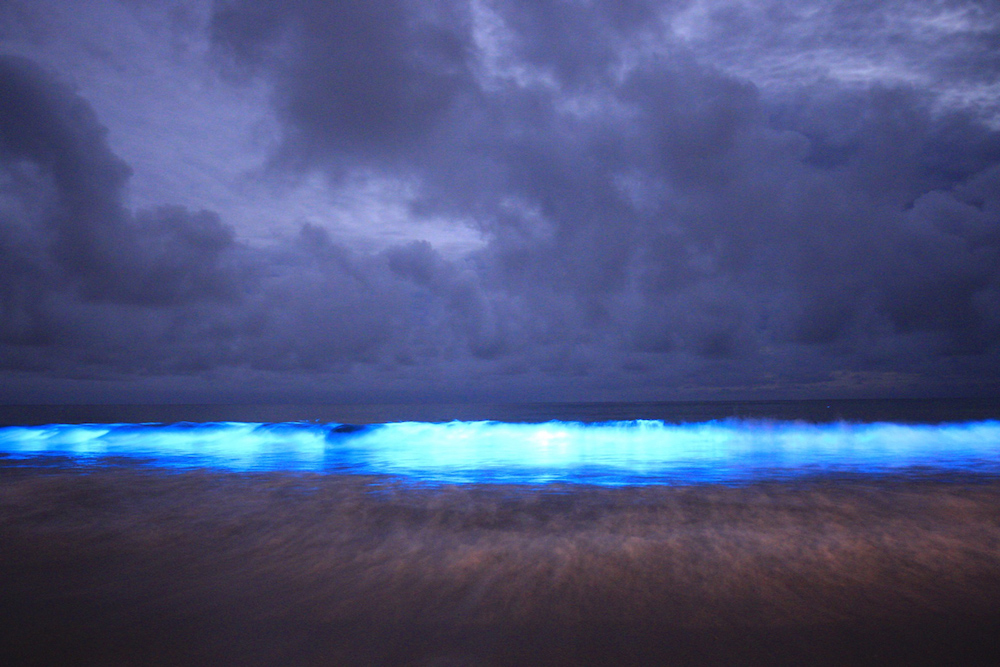Ghostly Blue Glow in Tasmania Bay May Signal Trouble

An ethereal blue light riding the waves along a beach in Tasmania may be enchanting, but it's actually a signal that the bay may be in danger. That's because the eerie glow comes from a bloom of bioluminescent algae that are known to destabilize marine food webs, according to news reports.
The shimmering blue light in Tasmania's Preservation Bay, off the south coast of Australia, is emitted by Noctiluca scintillans — microscopic plankton more commonly known as sea sparkle, the BBC reported. The bioluminescent creatures chemically emit light when disturbed, according to the BBC. (In contrast, animals that are biofluorescent absorb light at a high-energy wavelength and then re-emit it at a lower wavelength, which is typically green.)
The algae aren't toxic to people, though they may cause skin irritation to some who swim in their waters. However, they can be harmful to the greater ecosystem. [Bioluminescent: A Glow-in-the-Dark Gallery]
The luminous N. scintillans thrive in water with low oxygen levels. For instance, a 2014 study published in the journal Nature reported that oxygen-deficient water in the Arabian Sea led to three massive outbreaks of N. scintillans.
These N. scintillans blooms displaced microscopic algae, known as diatoms, to become the lowest link in the food web, Live Science previously reported. This change at the food chain's base can alter the entire food web, even disturbing the larger fish that people eat, the researchers said.
"We contend that N. scintillans blooms could disrupt the traditional diatom-sustained food chain to the detriment of regional fisheries and long-term health of an ecosystem supporting a coastal population of nearly 120 million people," the researchers wrote in the 2014 study.
It remains to be seen how the current N. scintillans bloom will affect Preservation Bay, but researchers are keeping an eye on it. Other people have visited the bay to catch a glimpse of its iridescent light.
Get the world’s most fascinating discoveries delivered straight to your inbox.
"I was gobsmacked," photographer Brett Chatwin told the BBC. "It was just an amazing sight."
N. scintillans outbreaks aren't always blue. Sometimes they are green, according to a 2017 study in the Marine Pollution Bulletin; and other times they are red, as when they bloomed in 2012 at Sydney's famous Bondi Beach, the BBC reported.
Original article on Live Science.

Laura is the managing editor at Live Science. She also runs the archaeology section and the Life's Little Mysteries series. Her work has appeared in The New York Times, Scholastic, Popular Science and Spectrum, a site on autism research. She has won multiple awards from the Society of Professional Journalists and the Washington Newspaper Publishers Association for her reporting at a weekly newspaper near Seattle. Laura holds a bachelor's degree in English literature and psychology from Washington University in St. Louis and a master's degree in science writing from NYU.



